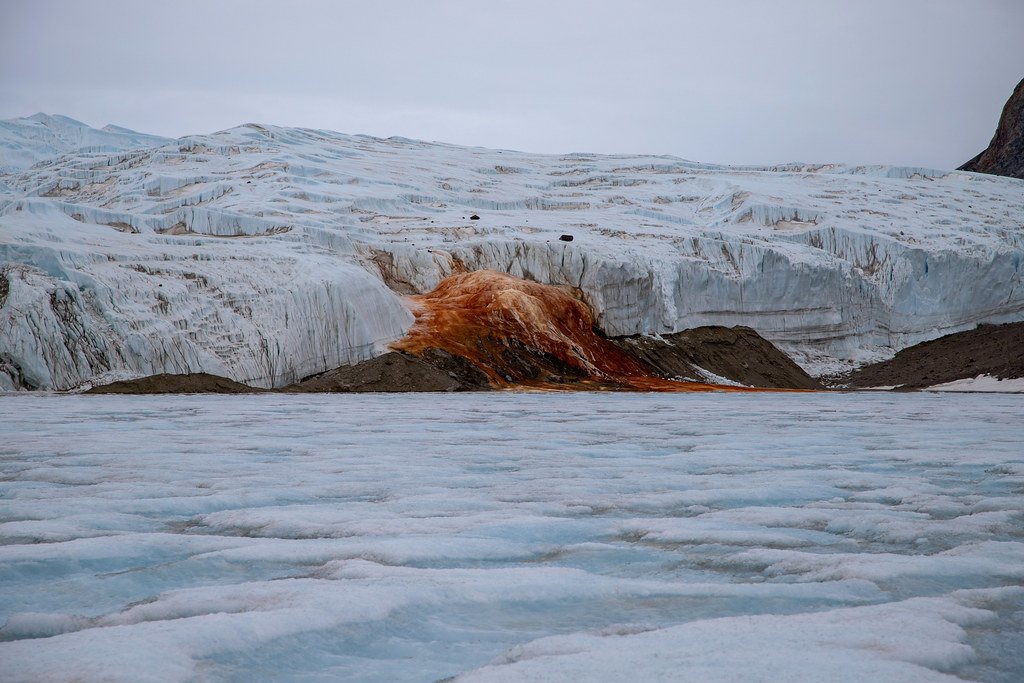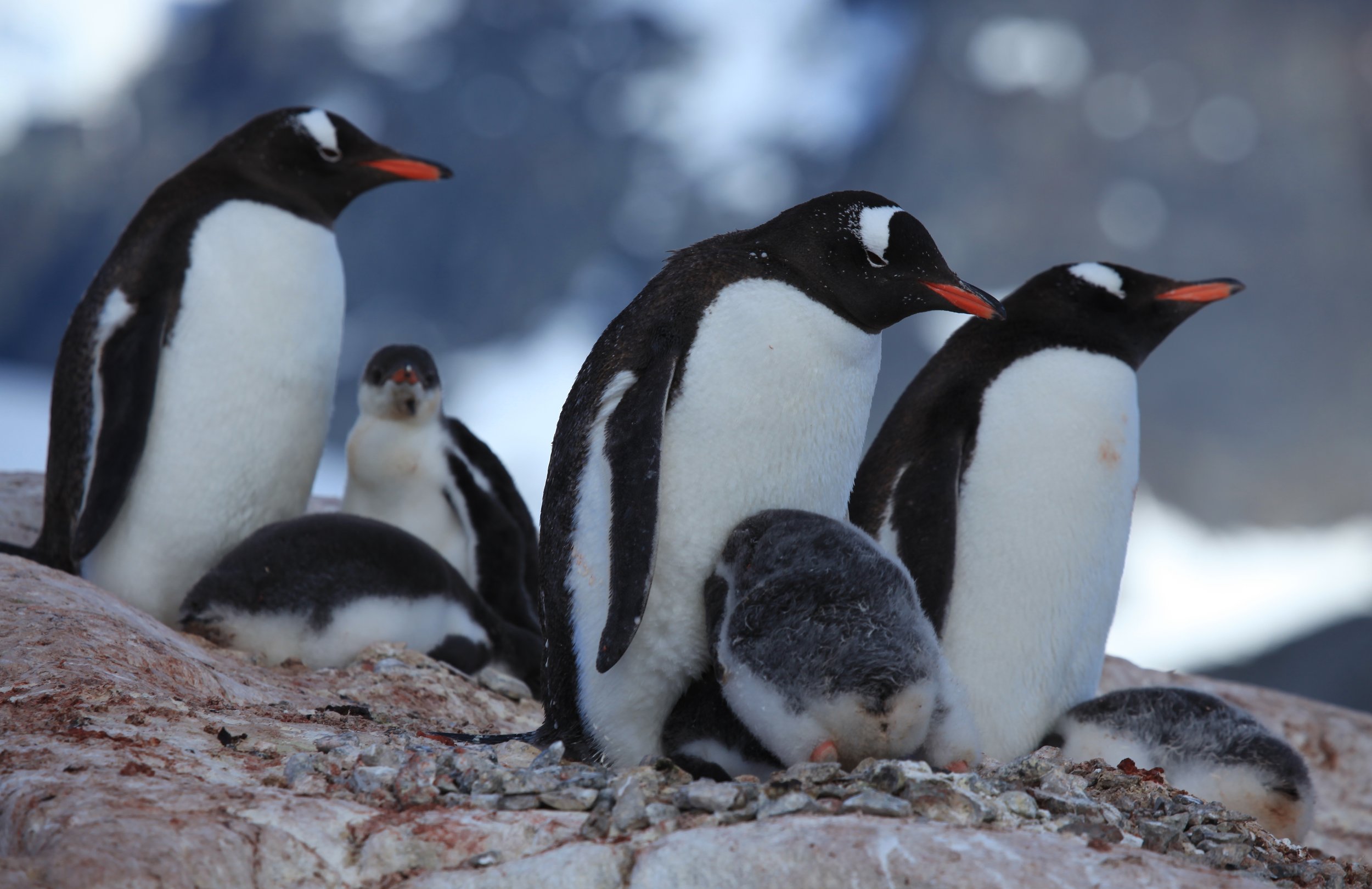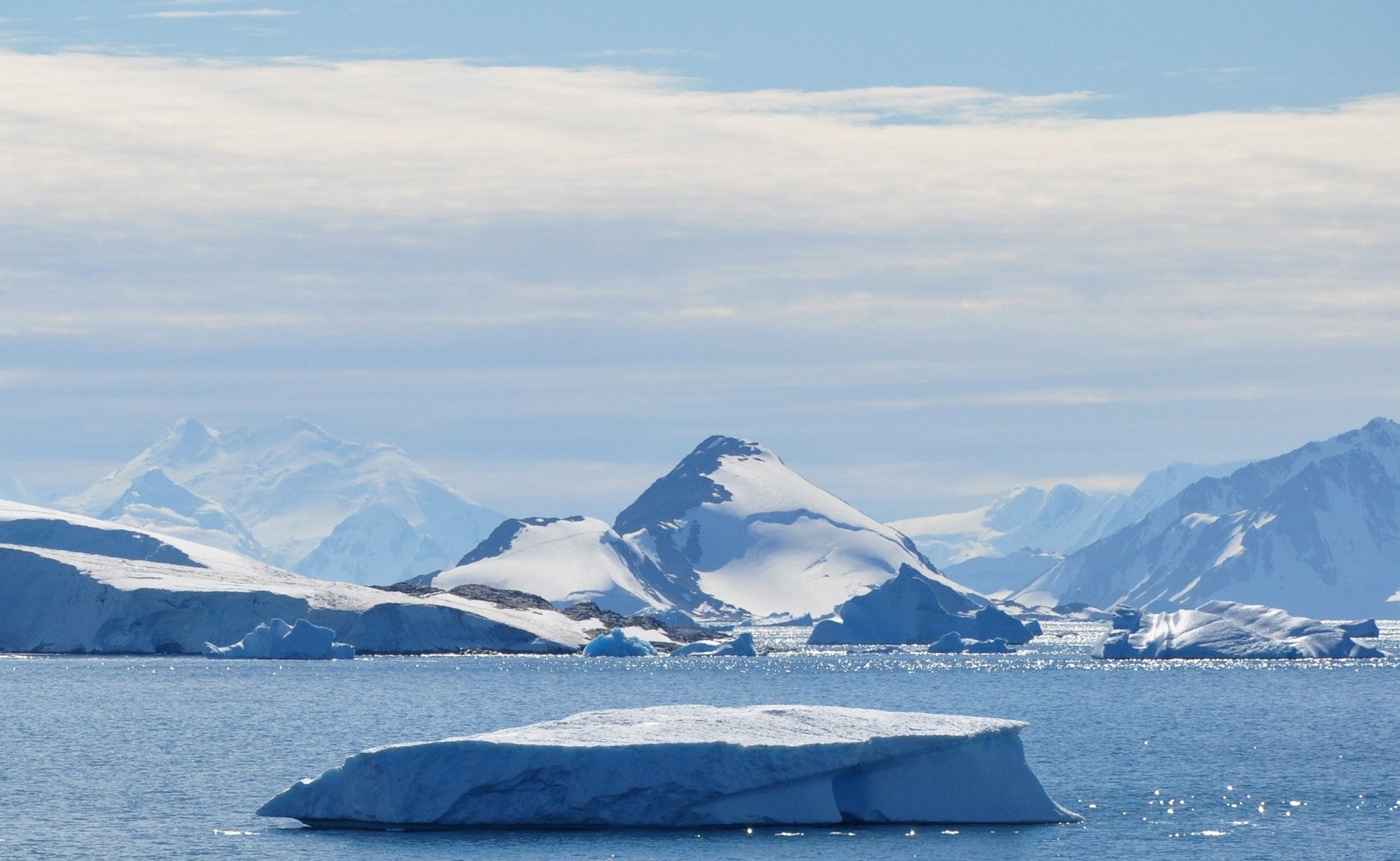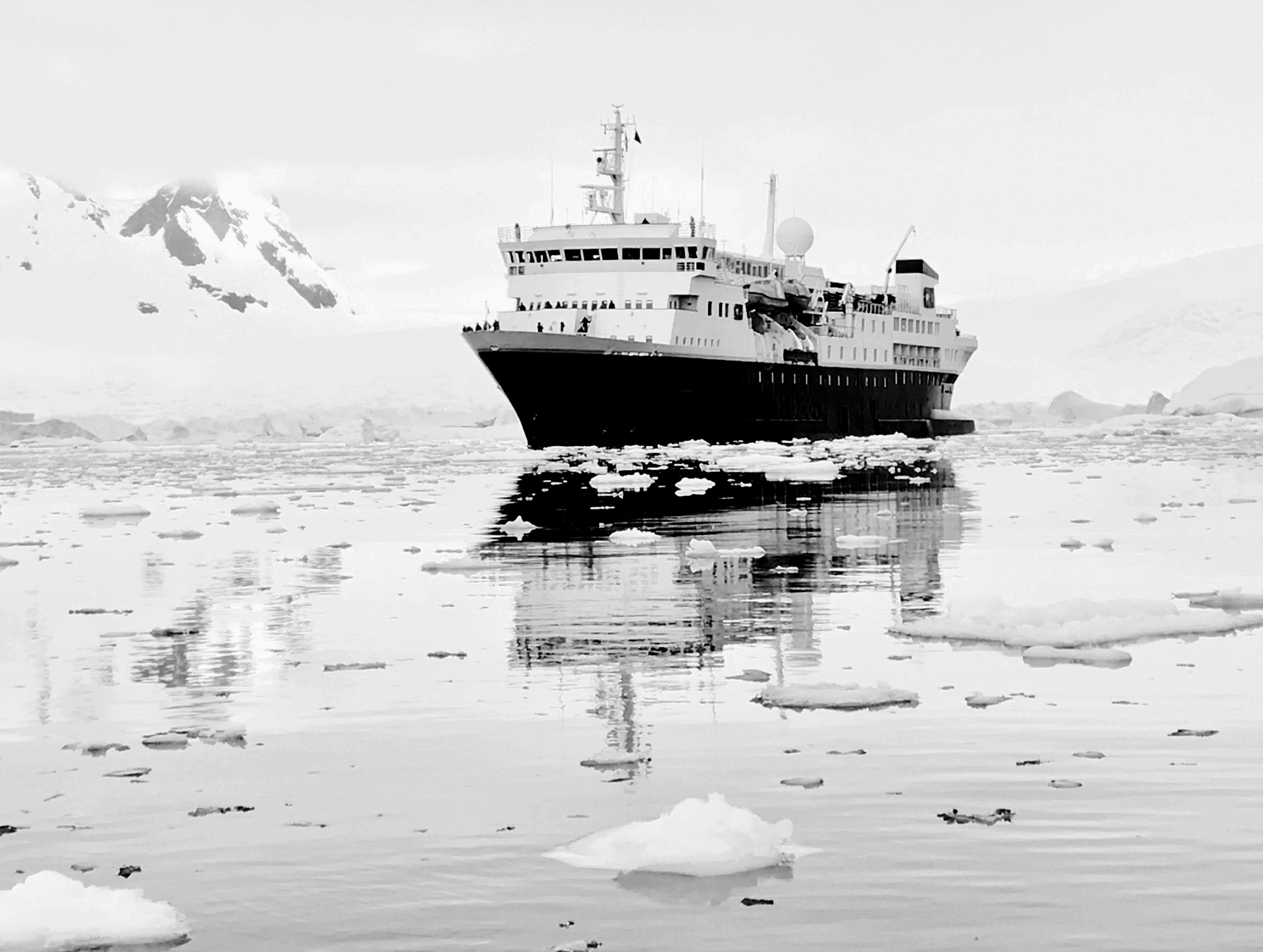Antarctica in November
There's a certain mystique about the far-flung glacial wilderness of Antarctica. It's a place that defies the ordinary, offering a portal to dazzling natural phenomena, breathtaking landscapes, and encounters with some of the world's most resilient and enigmatic wildlife. But what draws the intrepid traveler to the southernmost continent in November?
November signals the early stirrings of summer in Antarctica. The days are lengthening, temperatures are rising, and the ice that grips much of the continent begins to loosen its hold. For those bold enough to venture to this remote region at this time, it promises a transition from its stark winter cloak to the vibrant palette of the austral summer.
This detailed guide will walk you through every facet of an Antarctic adventure in November, from the unique seasonal highlights to the practicalities of your once-in-a-lifetime visit. Whether you're captivated by the idea of seeing penguin chicks take their first steps on the ice or simply in search of a travel experience unlike any other, November in Antarctica does not disappoint.
Weather in Antarctica in November
The climate in November serves as a bridge between the stark cold of winter and the relative warmth of summer in Antarctica. Visitors can expect a mixed bag of conditions, from clear, sunny days that hint at the burgeoning summer to the lingering snowstorms of the continent's fleeting spring.
Daylight Hours
The most dramatic change observed in November is the remarkable increase in daylight hours. At the beginning of the month, one might only experience a modest 18 hours of daylight. However, as the month progresses, this duration significantly extends, culminating in the phenomenon of the midnight sun becoming an everyday reality by the end of the month. This transition not only alters the daily rhythm but also transforms the landscape into a continuously illuminated wonder, offering unique experiences and opportunities for observation and activity that are not possible at other times of the year.
Weather Conditions
Antarctica's weather is notoriously unpredictable, and November is no exception. Although calmer than the winter months, there's still a risk of travel-disrupting blizzards and sea ice that hasn’t yet receded. Temperatures can vary widely, but generally range from around -15°C (5°F) to 0°C (32°F). This is a time of thaw, and while much of the coast is free from the autumnal ice-pack, internal regions will still be under winter's grip. Antarctica weather in November remains a challenge for travelers, with extreme cold temperatures, unpredictable storms, and limited daylight hours making it an adventurous and demanding destination.
Challenges and Considerations
Navigating an expedition to Antarctica in November presents a unique set of challenges and considerations that adventurers must keenly prepare for. The harsh and unpredictable climate, although milder than the Antarctic winter, requires careful planning and the right equipment to ensure safety and comfort. Additionally, the logistical obstacles of travelling to one of the most remote destinations on Earth cannot be underestimated. From selecting the right tour operator to packing appropriately for rapidly changing weather conditions, every aspect of the trip needs thorough examination. This section aims to address these vital considerations, providing prospective visitors with the insights needed to make their Antarctic journey not only possible but truly unforgettable.
Logistics and Safety
Antarctica's pristine environment is both magical and unforgiving. The continent has no permanent residents, and its infrastructure is limited to research bases operated by various countries, with only a few open to the public. Most visits are made via cruise ships or smaller expedition vessels that follow strict environmental guidelines and adhere to responsible travel practices.
As a visitor in Antarctica, it's crucial to follow the guidelines set by your tour operator and respect the fragile ecosystem. This includes being mindful of waste disposal, avoiding disturbing wildlife, and participating in educational programs offered on board. Additionally, proper preparation is key to ensuring safety during excursions onto the ice. Visitors should be equipped with specific gear such as waterproof boots, warm clothing layers, and sunscreen, among other essentials.
Remote Accessibility
Getting to Antarctica is no simple feat and requires a significant investment of time and resources. Most journeys begin in either Ushuaia, Argentina or Punta Arenas, Chile, with a two-day crossing of the Drake Passage before reaching the Antarctic Peninsula. This passage can be rough at any time of year, but November tends to see calmer seas compared to other months. Furthermore, as this is the beginning of the season, there may be more options for flights and availability on cruises.
Where to Go in Antarctica in November
Dotted with destinations that are steeped in both natural beauty and human history, Antarctica offers a variety of sites to explore in November. Here are four must-visit destinations and the unique experiences they offer.
Blood Falls
This eerie and captivating natural phenomenon, known as Blood Falls, is a striking feature of the Taylor Glacier. The falls derive their name from the iron oxide-tinted water that seeps from ancient cracks in the glacier. This unique outflow creates a vivid and stark contrast against the icy blue surroundings, resembling a gash of blood on the pristine white of the ice. The presence of iron oxide gives the water its distinctive red color, making the scene look almost otherworldly. This fascinating spectacle offers a glimpse into the dynamic processes that shape our planet's polar regions.
Cape Denison
The historic site of Douglas Mawson’s hut, meticulously preserved for over a hundred years, provides a deeply moving insight into the daring Antarctic expeditions of the early 20th century. Situated amidst the harsh, unforgiving landscape of Antarctica, this hut stands as a testament to the resilience and pioneering spirit of early explorers. The wild winds that sweep across the continent and the rare ice-free conditions surrounding the site contribute to making a visit here an unforgettable experience, offering visitors a unique window into the past and the challenges faced by those who ventured into the unknown.
The Dry Valleys
Resembling Martian landscapes rather than any terrestrial counterpart, these ice-free valleys are characterized by some of the most extreme desert conditions found anywhere on our planet. Despite their harsh environment, they are surprisingly home to unique micro-ecosystems. These ecosystems thrive in conditions that would be inhospitable to most forms of life, offering a stark and fascinating contrast to the expansive ice sheets that dominate the surrounding landscape. This stark contrast not only highlights the resilience of life in extreme conditions but also offers valuable insights into the adaptability and diversity of life forms on Earth.
Each of these destinations offers a unique perspective on Antarctica’s vast wilderness, far from the more frequented tourist paths and rich in untold stories waiting to be discovered in the early summer of November.
What to Do in Antarctica in November
Wildlife Spotting
At this early stage in the season, the wildlife is at its most vibrant and active. You can observe penguins as they begin their meticulous search for the perfect materials to construct their nests, showcasing their preparation for the breeding season. Seals can be seen luxuriating in the warmth of the sun, a rare moment of rest in their otherwise dynamic lives. Additionally, this time provides the first opportunities to witness the majestic migration of whale pods as they journey north, their playful antics a sign of the ocean's rich biodiversity coming to life.
Iceberg Cruising
Behold the breathtaking spectacle of towering icebergs, each one a unique masterpiece freshly calved from ancient glaciers. These colossal ice formations boast sheer faces of vivid blue, a testament to their dense ice and years of compression, creating a mesmerizing display in the cold, pristine waters.
Kayaking
For an exceptionally intimate connection with nature, consider taking to the waters in a kayak. As you glide through seas as smooth as glass, you'll navigate past floating ice floes, and if you're lucky, encounter playful seals frolicking in their natural habitat. This serene journey offers a unique perspective of the aquatic world, allowing for moments of peaceful solitude or exciting wildlife sightings.
Photography
The massive ice formations, towering like ancient monuments against a crystal-clear sky, alongside the exotic wildlife that calls this frosty paradise home, offer endless opportunities for photography enthusiasts. From the majestic polar bears to the playful penguins, each moment presents a chance to capture awe-inspiring images that tell the story of nature's untouched beauty.
Wildlife and Natural Phenomena in November
Witness the Arrival of Migratory Species
In November, the skies and seas come alive as migratory birds make their anticipated return and majestic whales arrive, transforming the once quiet and desolate seas into a bustling and thriving haven for an array of wildlife. This seasonal change brings a renewed sense of life and activity to the area, drawing the attention of nature enthusiasts and wildlife observers eager to catch a glimpse of these magnificent creatures in their natural habitat.
Breeding and Mating
Penguin colonies burst into activity as these fascinating birds journey to their breeding grounds, each species with its own unique ritual. Meanwhile, the icy landscapes are further enlivened by various species of seals that begin the delicate process of giving birth to their young, adding to the bustling life in these cold, yet vibrant ecosystems.
Ice Formations
The unusually high temperatures experienced in November contribute to remarkable transformations in ice formations. This results in an ever-changing landscape, teeming with beauty and complexity, that beckons adventurers and photographers alike to explore and capture its essence. The dynamic nature of these transformations provides a unique opportunity to witness the beauty of nature's artistry in real time.
Events and Happenings in Antarctica in November
Scientific Research
Antarctica serves as a global center for scientific research throughout the year, attracting researchers from all over the world to its icy expanse. With the arrival of November, the continent sees the commencement of numerous scientific projects, as conditions become more favorable for fieldwork. During this time, scientists embark on a wide range of studies, from climate change impacts to wildlife behavior, leveraging the improved weather to conduct their research more effectively.
Environmental Initiatives
Participate actively in ongoing environmental conservation initiatives, which are vitally important for safeguarding the region's delicate ecosystems. These efforts are essential in preserving the rich biodiversity and maintaining the ecological balance of this pristine environment, helping to ensure that it remains vibrant and healthy for future generations to enjoy.
Cultural Celebrations
Although they are not widespread, certain cultural celebrations do occur in Antarctica, offering a unique and rare insight into the rich indigenous and exploratory heritage of this remote continent. These events not only commemorate the historical expeditions and scientific achievements but also highlight the diverse cultural backgrounds of the people who work and live temporarily in this icy wilderness.
Cultural and Historical Significance
Indigenous Peoples' Ties to Antarctica
Understanding and deeply valuing the profound and longstanding connection that the continent has with its indigenous populations is absolutely crucial. These communities have not only contributed significantly during the exploratory missions that helped chart previously unknown territories but have also played a pivotal role in the development of national identities across the globe. Acknowledging these contributions is essential for a thorough and complete appreciation of our collective history.
However, this understanding should not be limited to historical events alone. It is equally important to recognize and celebrate the rich cultural heritage, traditional knowledge, and the continuous impact indigenous populations have on society today. Their wisdom, deeply ingrained in respect for the environment and communal living, offers invaluable insights into sustainable living and social cohesion.
Furthermore, by integrating their perspectives and knowledge systems into the contemporary world, we can enrich our societies in diverse and profound ways. This includes not only recognizing their art, music, and storytelling traditions but also incorporating indigenous approaches to governance, education, and resource management into modern practices. Such integration can foster a more inclusive, equitable, and sustainable future for all, bridging the gap between the past and the present.
Historical Sites and Landmarks
Dive into the historical depths of exploration by visiting the preserved huts of legendary figures like Robert Falcon Scott and Roald Amundsen. These huts, left almost untouched, serve as eerie, time-capsule relics of ambitious missions from the past. Walking through these sites offers a unique opportunity to step back in time and imagine the daily lives of these explorers. You can almost feel the intense cold and sense the determination that drove them to brave the unknown.
These historical sites not only provide a rare glimpse into the brutal conditions these adventurers faced but also stand as frozen monuments, celebrating their incredible resilience and the human spirit's drive to explore the uncharted. Each artifact, journal, and preserved piece of equipment tells a story of courage, teamwork, and the relentless pursuit of knowledge, making these sites essential visits for anyone interested in the history of exploration.
Environmental Conservation Efforts
Protecting the Antarctic Ecosystem
Antarctica, with its unparalleled and delicate ecosystems, urgently requires safeguarding measures. The promotion of eco-tourism serves as a powerful tool in this regard, as it encourages tourists to engage directly with conservation efforts, fostering a deeper understanding and appreciation of the need to protect this pristine environment. By witnessing the fragile beauty of Antarctica firsthand, individuals are inspired to contribute to the preservation of its unique habitats and wildlife.
Minimizing Your Impact
It's absolutely crucial to follow strict environmental guidelines and adopt best practices to protect our planet. Always be conscious of the impact your actions have on the environment, known as your ecological footprint, and take steps to minimize this impact. It’s equally important to educate and ensure that all visitors adhere to these practices as well, to maintain and ensure the health and sustainability of the continent for future generations. Acting responsibly and encouraging others to do the same can make a significant difference in preserving our natural world.
Practical Advice for Visitors
Preparing for the Antarctic Environment
When packing for extreme conditions, it's essential to prepare for any scenario. Make sure to include plenty of layers to adjust to varying temperatures, high SPF sun protection to shield against harmful UV rays, and appropriate waterproof gear to stay dry in wet conditions. This comprehensive approach ensures you're well-prepared for whatever the environment throws your way.
Health and Safety Considerations
To effectively mitigate risks, extensive preparation is crucial. Visitors must ensure they have comprehensive travel insurance that covers all potential scenarios. Additionally, being in good health is essential, and it is imperative to adhere strictly to all expedition safety protocols, including emergency procedures and guidelines for navigating challenging environments. This level of preparedness is necessary for a safe and enjoyable experience.
Responsibly Interacting with the Environment
Guidelines for responsible travel in Antarctica are designed to be strict in order to preserve its pristine environment. It's imperative that visitors adhere closely to the direction provided by their guides, ensuring their own safety as well as the protection of the fragile ecosystem. This means maintaining a safe distance from wildlife, minimizing waste, and avoiding any actions that could disrupt the natural habitat. By following these guidelines, travelers can help ensure that Antarctica remains unspoiled for future generations.
Conclusion
Exploring Antarctica in November offers a unique perspective on the continent's wilderness and the remarkable adaptability of its wildlife. From the vibrant display of emerging flora to the bustling activities of the animal kingdom, the southern summer paints a picture of a continent on the brink of transformation.
For the adventurous few willing to make the trek, a November visit to Antarctica is not just a vacation—it's a pilgrimage to one of the world's last true frontiers, a testament to the beauty and power of the natural world.
Interested in visiting Antarctica in another month? Check out our other guides below:
Frequently Asked Questions
-
The summer season in Antarctica typically runs from November to March, offering a window of milder temperatures and extended daylight hours. During this period, scientific research stations become more active, and wildlife such as penguins and seals are more visible as they breed and nurture their young. However, the specific dates may vary slightly depending on the location, as different regions of the continent experience varying climatic conditions. This time of year is also crucial for glaciologists and climate scientists who take advantage of the more accessible conditions to conduct fieldwork and gather important data.





















